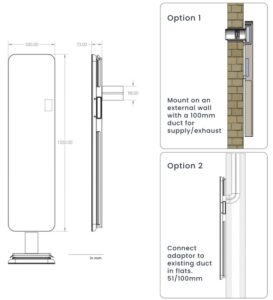30% of domestic load shiftable, Peltier heating for the home and a new storage technology
In this issue:
30% of personal electricity use could be shifted
Researchers at Australian National University have modelled household demand and storage and estimate about a third of personal electricity use in a fully electrified city could be load shifted to ease strain on networks. Using ACT as its model, obviously with the city of Canberra (pop. c. 475,000) dominating, the researchers concluded if loads aren’t managed, peak demand will increase by 30%. However, the per capita storage capacity from EVs and hot water would be around 46kWh, 43kWh of which would come from the EV. Under this all-electric scenario, daily use is estimated at 16kWh, with around 5kWh of that flexible. Using this flexibility smartly would not only iron out any peak demand increase but would also spread demand to reduce the investment required for infrastructure upgrades.
IEA loses US support
Among the many victims of the US Government’s push to eliminate spending on addressing global warming, which has included the UN’s climate programmes, this week saw moves to cease its support for the IEA. The IEA receives around US$6 million (NZ$10m) from the US, about 14% of its annual budget. According to officials, the IEA has “abandoned objectivity” and is now a political puppet of the climate change lobby! Support for the Montreal Protocol is also on the chopping block under the move.
China-EU accord issued
Better news from Beijing with the Chinese and EU Governments issuing a joint statement reinforcing their commitment to collaboration on addressing climate change. The statement reiterates the two regions’ commitment to the UNFCCC, NDCs and COP30.
Another new energy storage technology
The Lounavoima waste to energy plant in Salo, Finland, is experimenting with capturing and storing 14GWh of surplus heat in glass fibre reinforced polymer tubes 2km underground. The stored energy will be released during winter months to reduce reliance on supplementary oil burners at the plant. The energy saved is equivalent to the heating needs of 700 houses.
Quiet, refrigerant-free domestic heating and cooling
UK start-up, Anzen, is marketing a new, self-contained, wall-mounted heating and cooling appliance that can be retrofitted into homes easily and cheaply. The device is made from a thermoelectric module operating using the Peltier effect (named after its discoverer, Jean Charles Athananse Peltier, 1834) built into a thin housing. The device does not use refrigerants or a compression system and does not need an external unit. Rather, it operates by passing an electric current through the module to change its surface temperature.
Did you know …..
Penguins amend swimming routes to save energy? Apparently, a straight line between two points is not always the most efficient way for the smart birds, who alter routes and use currents to minimise the energy expended getting home. Rather than fight currents, they’ll drift with them and happily add distance to their journey to save energy.

